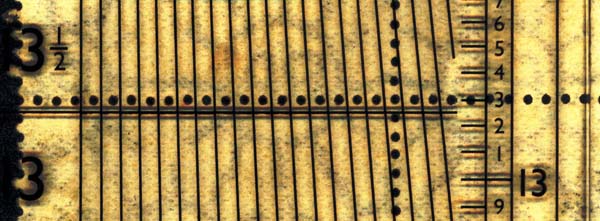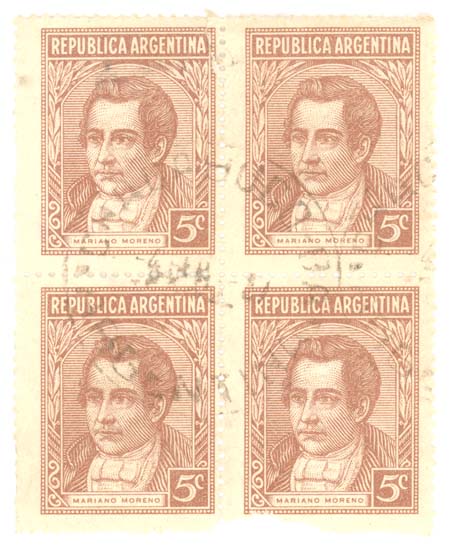The perforation comb used during the first printing, from October 1, 1935; with small and irregular holes, results in variables measurements of the vertical perforation between 13.1 and 13.4. I only find one vertical row with 13.1 perforation, and it is a row with a skipped perf hole. Here I show three illustrative blocks.
The first block is from the row with a perf skip, perforation 13.15, and it should be the same row as that for the 10c Rivadavia Red type I block shown previously.


The second block measures 13.3


The third block measures 13.4


Judging by the rare frequency with which I find the 13.1 perforation, I am guessing that it is only found in one column of the sheet. All of the 5c lithographed (5c1E1) look like they were perforated with this comb; and not with the later comb that measures exactly 13.5 by 13.5.






